Peacock bass - Cichla ocellaris
Scientific name: Cichla ocellaris
Common name: Peacock bass
Family: Cichlidae
Usual size in fish tanks: 68 - 74 cm (26.77 - 29.13 inch)
014
Recommended pH range: 6.4 - 7.5
Recommended water hardness: 7 - 20°N (125 - 357.14ppm)
0°C 32°F30°C 86°F
Recommended temperature range: 23 - 27 °C (73.4 - 80.6°F)
The way how these fish reproduce: Spawning
Where the species comes from: South America
Temperament to its own species: peaceful
Temperament toward other fish species: aggressive to smaller
Usual place in the tank: Middle levels
Origin
The Peacock Bass (Cichla ocellaris) originates from the tropical freshwater systems of South America. It is primarily found in the vast network of rivers, lakes, and floodplain regions in countries such as Guyana, Venezuela, and Brazil. These regions are part of the Amazon and Orinoco River basins, known for their warm, nutrient-rich waters that provide an ideal environment for this species to thrive. The natural habitat of the Peacock Bass features densely vegetated areas, submerged roots, and fallen logs, offering plenty of cover for both hunting and spawning. As apex predators in their ecosystem, Peacock Bass actively hunt smaller fish, insects, and crustaceans in the slow-moving waters. When recreating their natural environment in an aquarium, it is important to provide hiding spaces with rocks, driftwood, and sturdy plants, along with ample open water for swimming.
Lifespan
The lifespan of Peacock bass is believed to be around 15 years.
Short description
The Peacock Bass is a magnificent and highly active species known for its impressive size, vibrant coloration, and predatory behavior. With its striking appearance and voracious appetite, this cichlid quickly becomes a centerpiece in any large aquarium. However, due to its potential size of up to 74 cm (29.13 inches), it is best suited for public aquariums or very experienced aquarists with a large, well-maintained setup. This species requires a spacious environment, with a minimum tank size of at least 3.05m (ten feet) in length, to accommodate its active nature and prevent stress.
One of the defining characteristics of the Peacock Bass is its stunning coloration, featuring a greenish-blue body with yellowish sides and three black vertical stripes, accompanied by a series of black spots along the lateral line. These fish are known for their peaceful temperament toward their own species but display aggressive and predatory behavior toward smaller fish, which they often view as prey. Therefore, suitable tank mates should be of a similar size to prevent any potential predation.
The Peacock Bass requires excellent water quality, consistent filtration, and regular maintenance due to its high waste production. A sump filtration system is recommended for such a large setup, paired with weekly water changes to maintain optimal water conditions. Despite their aggressive feeding habits, they are not picky eaters and can thrive on a diverse diet of pellets, earthworms, beef heart, mussels, and spinach. Aquarists must exercise caution when introducing new fish to the tank, as these predatory cichlids may view smaller, slow-moving species as food. A tight-fitting lid is also necessary, as Peacock Bass can jump when startled.
Food and Feeding
Peacock Bass have a voracious appetite and require a varied diet to stay healthy. Provide them with quality pellets, earthworms, beef heart, mussels, and spinach. Regular feeding with a combination of meat-based and vegetable foods will help them grow and maintain vibrant coloration.
Sexing
There are no visible differences between the sexes except during spawning times. The female’s papilla becomes more rounded during this period. Mature males may develop a nuchal hump on their heads, which can be an indicator of their sex.
Breeding
Peacock Bass have not been reported to breed in home aquariums. In the wild, they are known to lay eggs in pits dug out of the muddy substrate. The female lays her eggs by making several passes over the spot, depositing a few eggs at a time. The male then fertilizes the eggs by passing over them and releasing his sperm. Once the fry are free swimming, the male will often chase the female away.
If attempting to rear fry, they can be siphoned out of the tank and transferred to a separate growing tank equipped with a sponge filtration system for aeration. The eggs usually hatch after 3-4 days, and the fry become free swimming a few days later. Newly hatched brine shrimp are an ideal first food for the fry, but feeding should only begin once the yolk sacs have been completely consumed. As they grow, introduce micro worms or similar foods to support their development.
Pictures
Bought by aqua-fish.net from jjphoto.dk. Other pictures were provided by Coleman A. Crawford.
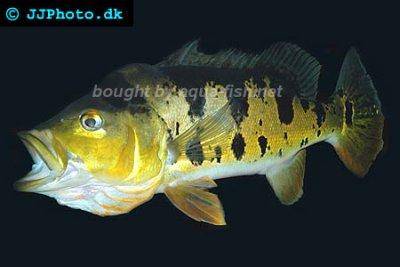










 Thread-finned
Thread-finned 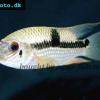 Acara
Acara  Yellow
Yellow  Patrick's
Patrick's  Blue
Blue  Green
Green 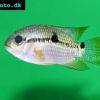 Acara
Acara  White
White  Compressed
Compressed 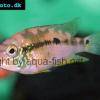 Pastel
Pastel  Midas
Midas  Red
Red  Bluemouth
Bluemouth  False
False 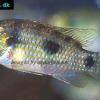 African
African  Agassiz's
Agassiz's  Banded
Banded  Yellow
Yellow  Cockatoo
Cockatoo  Blue
Blue  Blackstripe
Blackstripe  Highfin
Highfin  Redstripe
Redstripe  Threadfinned
Threadfinned  Macmaster’s
Macmaster’s 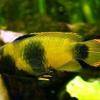 Panda
Panda  Norbert’s
Norbert’s 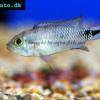 Blue
Blue  Thin-line
Thin-line  Three-striped
Three-striped  Viejita
Viejita 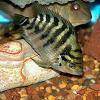 Flier
Flier  Archocentrus
Archocentrus  Convict
Convict  Seven
Seven  Spiny
Spiny  Oscar
Oscar  Sunshine
Sunshine  Chitande
Chitande  Firebird
Firebird  Midnight
Midnight  Lake
Lake  Sunshine
Sunshine  Aulonocara
Aulonocara  Nyasa
Nyasa 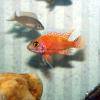 Ruby
Ruby  Grants
Grants  Aulonocranus
Aulonocranus  Chameleon
Chameleon  Benitochromis
Benitochromis  Orinoco
Orinoco  Yellow
Yellow 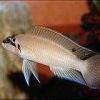 Brichard’s
Brichard’s  Guenther’s
Guenther’s  Southern
Southern  Cichla
Cichla  Chiseltooth
Chiseltooth  Bolivian
Bolivian  Red
Red  Many-pointed
Many-pointed  Jack
Jack  Red
Red  Three
Three 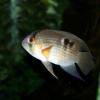 Keyhole
Keyhole  Azureus
Azureus  Red
Red  Jackson’s
Jackson’s  Crenicichla
Crenicichla  Honduran
Honduran  Blue-eye
Blue-eye  Afra
Afra 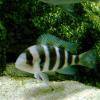 Frontosa
Frontosa  Slender
Slender  Malawi
Malawi  Chequerboard
Chequerboard  Checkerboard
Checkerboard  Malawi
Malawi  Ectodus
Ectodus  Tanganyika
Tanganyika  Canara
Canara  Green
Green  Rostratus
Rostratus  Pearl
Pearl 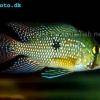 Geophagus
Geophagus  Yellowhump
Yellowhump  Suriname
Suriname  Redhump
Redhump  Red
Red  Dority’s
Dority’s  Argentine
Argentine 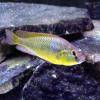 Burton’s
Burton’s  Victoria
Victoria 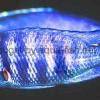 Haplochromis
Haplochromis  Jewel
Jewel  Banded
Banded 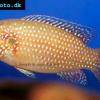 Lifalili
Lifalili  Lowland
Lowland  Texas
Texas  Pantano
Pantano  Severum
Severum  Banded
Banded 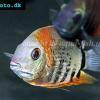 Severum
Severum  Rainbow
Rainbow  Parrot
Parrot  Chocolate
Chocolate  Brown
Brown  Marlieri
Marlieri  Golden
Golden  Striped
Striped  Masked
Masked 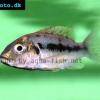 Konye
Konye  Blue
Blue  Trewavas
Trewavas  Electric
Electric  Dwarf
Dwarf  Redbreast
Redbreast  Lamprologus
Lamprologus  Gold
Gold 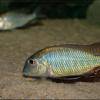 Greenface
Greenface 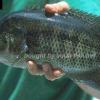 Mayan
Mayan  Aurora
Aurora  Blue
Blue  William’s
William’s 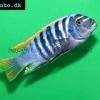 Zebra
Zebra  Malawi
Malawi  Blue
Blue 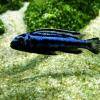 Blue
Blue  Mbuna
Mbuna  Parallel
Parallel  Purple
Purple  Flag
Flag  Bolivian
Bolivian  Ram
Ram  Basket
Basket 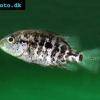 Haitian
Haitian  Zebra
Zebra  Striped
Striped  Neolamprologus
Neolamprologus  Brevis
Brevis  Fairy
Fairy 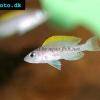 Neolamprologus
Neolamprologus  Cylindricus
Cylindricus  Hecq’s
Hecq’s  Neolamprologus
Neolamprologus  Lemon
Lemon  Mustax
Mustax  Daffodil
Daffodil  Six-bar
Six-bar  Five-bar
Five-bar  Marbled
Marbled 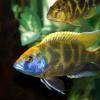 Giraffe
Giraffe  Blue
Blue  Sulphurhead
Sulphurhead  Wolf
Wolf  Jaguar
Jaguar  Blue
Blue  Marakeli
Marakeli  Madagascar
Madagascar  Pinstripe
Pinstripe  Pelmatochromis
Pelmatochromis  Kribensis
Kribensis 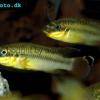 Striped
Striped  Red
Red  Deepwater
Deepwater  Fenestratus
Fenestratus  Nichols’
Nichols’  Southern
Southern  Bumble
Bumble  Demason’s
Demason’s  Slender
Slender  Red
Red  Mbuna
Mbuna  Malawi
Malawi  Kenyi
Kenyi  Powder
Powder  Altum
Altum  Angelfish
Angelfish  Angelfish
Angelfish 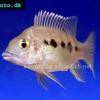 East
East  Juba
Juba  Earth
Earth 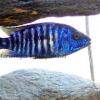 Electric
Electric  Azure
Azure  Lionhead
Lionhead  Discus
Discus  Blue
Blue  Red
Red  Zebra
Zebra  Brichard’s
Brichard’s  Blue
Blue  Firemouth
Firemouth  Zebra
Zebra  Yellow
Yellow  Blue
Blue  Dwarf
Dwarf  Blunthead
Blunthead 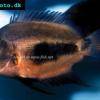 The
The  White
White  Twoband
Twoband  Fenestratus
Fenestratus  Window
Window  Tailbar
Tailbar  Black
Black  Redhead
Redhead 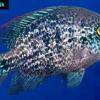 Oaxaca
Oaxaca  Xenotilapia
Xenotilapia